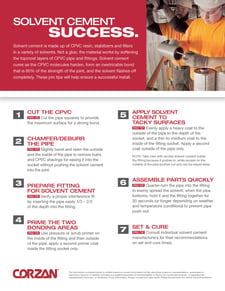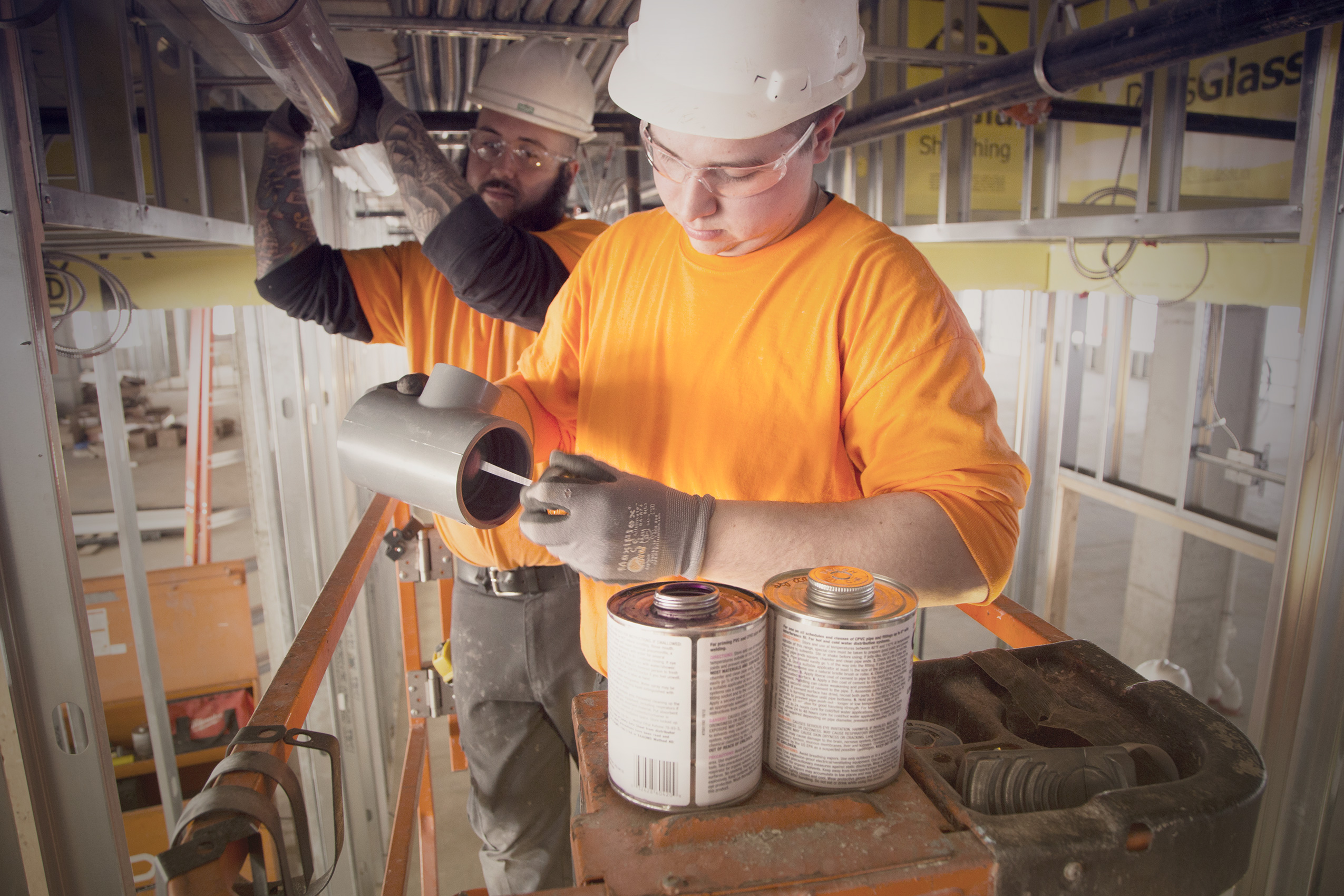Solvent Cement Success – It’s Math and Science in Seven Steps
Manufacturers develop instructions for installing or using their products for good reason. In the case of solvent welding of CPVC piping, a general disregard for the piping manufacturer’s installation recommendations will – sooner or later – give the system a lack of resiliency that will manifest itself in a shortened service life.
That’s why when it comes to having a high standard of workmanship, it’s important to follow the directions for using solvent cement. Solvent welding is a form of welding that combines principles of geometry and chemistry rather than heat. When the right mixture of solvents and radial pressure is applied, a CPVC pipe and its suitable fitting become permanently fused and form a joint that functions as a single component.
In the case of a properly assembled system made of Corzan® CPVC, 80% of the joint strength will come from this fused area. However, installers must avoid angled pipe cuts, clear away burrs and filings, and check the fit of the pipe and fitting prior to solvent welding. Solvent cement works when the installer is diligent about the required steps for its use. There can be no shortcuts.
To help ensure that great workmanship, Corzan Piping Systems has developed a tip sheet for each step of the process. Access our Solvent Cement Guide.

Do you have a question about Corzan CPVC installations beyond the solvent welding process? We’re here to help with technical support and advice. Don’t hesitate to contact us.



